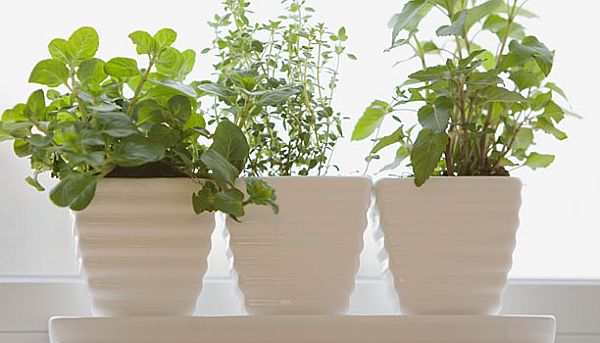
With the growing awareness among everyone towards protection of the greenery; more and more, people these days are getting inclined towards gardening. The need for fresh oxygen has made the new generation so crazy that they try to find space in the smallest corner of their house to plant some greenery. Thus, your window sill should also not be neglected at all in this regard. You can make a beautiful herb garden in your window sill and protect some of your exotic herbal plants from the harsh blows of weather that they suffer from in your backyard by bringing them under your closed supervision and care. Moreover, you will also be benefited by the mood uplifting aroma of different herbs in your kitchen all through the winter.
Difficulty
Average
Time Required
20 minutes
Resources required
- Pots with drainage holes
- Drainage saucers or trays
- Commercial potting soil
- Sand or perlite
- Water soluble organic fertilizer
- Kitchen shears
Instructions
1. Select the herbs and the container
Before you start to plan about your herb garden it is essential to secure some of the herbs that will be easy to take care of and handle. Thus, select those varieties from your local nursery that have color and are compact in height. Going for those with spindly structures and elongated heights will be difficult to handle and also not fit for your window sills. Now, secure a separate container for each of your herb saplings. Never try to jam one container with multiple herbs as each of them have different water requirement, recommended soil chemistry, air and sunlight requirement. Keeping all of them together will deteriorate their healthy growth.
2. Preparation of the container and the soil
Select containers that have minimum of six inches of depth. Also, be careful to find out that each of the containers have a hole right at the bottom to allow proper drainage of water during watering. Now, create a base layer of approximately one inch in the container, that will consist of sand and perlite. These materials will not mix with the soil to form mud and will allow easy drainage of water. After this, prepare soil mix by mixing a handful of organic compost to the soil that you intend to sow your saplings in.
3. Sowing the seed or sapling
Whether seed or sapling, sow it in the depth of the soil as recommended to you by the nursery from where you have secured your stuffs. Water the plants immediately and profusely enough so that the soil gets wet. Repeat watering if necessary and keep them indoors for at least two to three days as they are too tender to withstand direct sunlight right at the moment. After two to three days you can take them outdoors and rearrange them on your kitchen window sills as now they are capable enough to tolerate sunlight, air and chill of the climate.
4. Regular care of the herbs
Place the herbs in the direction of your kitchen where they can get direct sunlight for at least five to six hours a day. Water them whenever the soil feels dry to touch. Drain off accumulated water from the drainage saucer and never allow water to stand as that would rot the plant roots. Excluding the fall and peak winters, fertilize the herbs after regular intervals of every two to three weeks.
Frequently asked questions
Q. How can I avoid water spill on my window sill while watering the herbs?
A. Place the containers with the herbs over trays to avoid spillage.
Q. What types of plants are best for herbal garden?
A. Choose plants that have compact growth such as basil, lavender, parsley, etc. Also insist on younger plants or secure seeds to germinate plants from them.
Q. Which of my kitchen window sill is the best for herb garden?
A. Growing your herbal plants on the window that receives the maximum sunlight is recommended.
Quick tips
1. Choose compact herbal plants for your window sills like basil, lavender, parsley, mint, etc.
2. Affix fluorescent lamps at a distance between 18 inches with the plants, for at least ten hours a day, if your kitchen window does not have access to direct sunlight.
3. Snipping the plants often from their tender tops encourage more growth.
4. Snipping should be restricted to 1/3 of the plants height, not more than that.
Things to watch out for
1. Always water your herbs in moderation to ensure healthy plant growth as over watering can cause root rot while under watering can dry the plants up.
2. Never forget to add compost to the soil mixture that you prepare for sowing your herb seeds or saplings.




